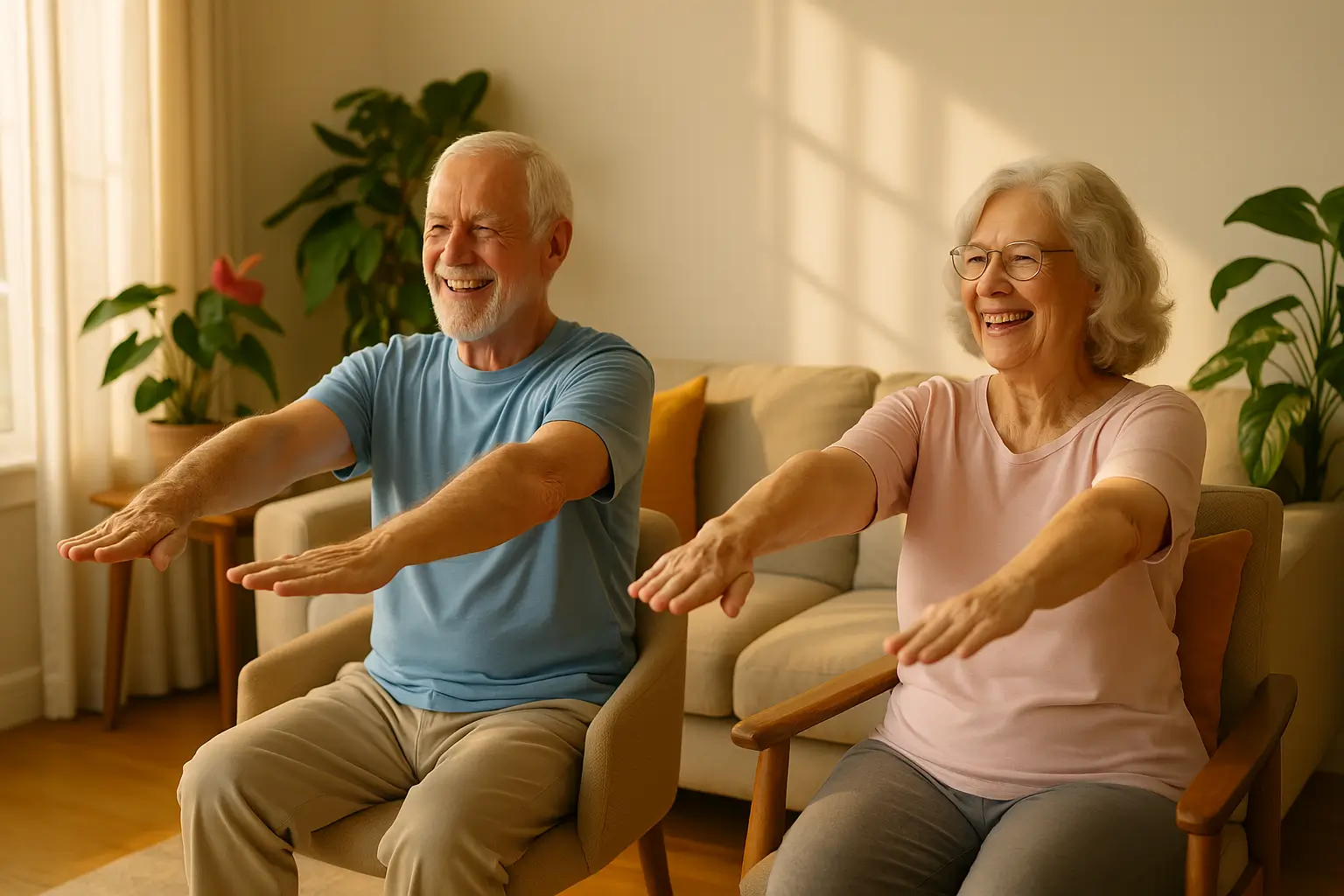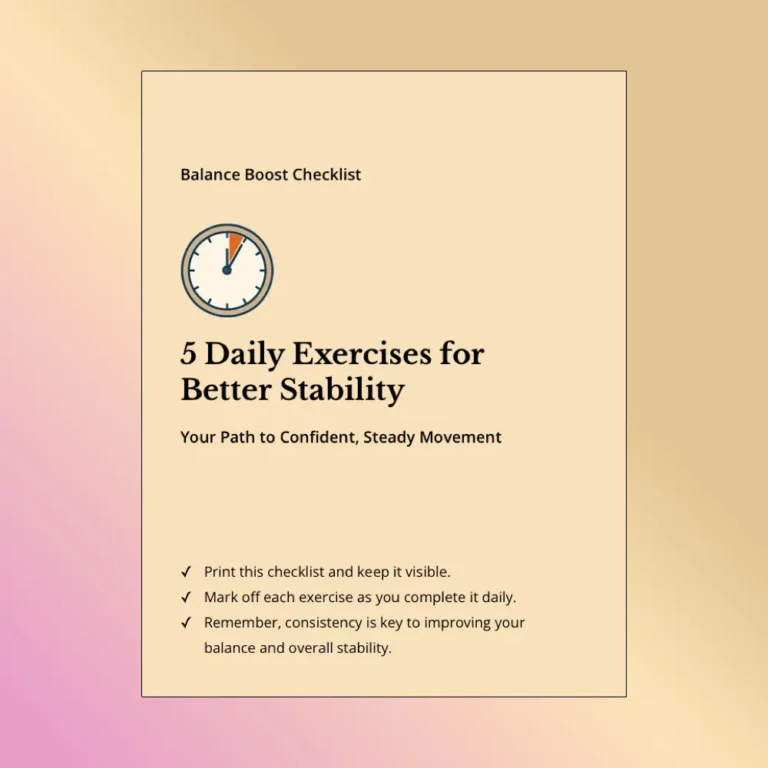

As we age, staying physically active becomes increasingly important for our health and independence. Chair exercises for seniors offer a wonderful way for older adults to keep fit without putting unnecessary strain on their bodies. These seated exercises provide an accessible fitness option that can easily become part of a daily routine, allowing those with mobility challenges to stay active and engaged.
Chair exercises offer numerous advantages for older adults looking to maintain their health and independence. These seated workouts provide a safe alternative to traditional exercise programs while delivering significant health benefits. For seniors over 60, chair workouts can be particularly beneficial.
Regular chair exercises can make a remarkable difference in a senior’s quality of life. The physical improvements include better mobility for everyday tasks, increased muscle strength without unnecessary strain, and improved flexibility that helps reduce the stiffness that often comes with aging.
Beyond the physical benefits, these exercises also help with balance and coordination, which can significantly reduce the risk of falls, a major concern as we age. The mental aspects shouldn’t be overlooked either, as physical activity can boost mood and help maintain cognitive function, contributing to a more positive outlook.
The benefits of chair exercises include improved cardiovascular health, enhanced core strength, and greater range of motion, all of which contribute to better overall wellness. These seated exercises for seniors can be adapted to various fitness levels, making them ideal for anyone with limited mobility.
| Exercise | Main Benefit | Difficulty Level |
|---|---|---|
| Seated Jacks | Improves stamina and coordination | Beginner |
| Seated Shoulder Press | Strengthens upper body | Beginner-Intermediate |
| Sit-to-Stands | Builds leg strength and balance | Intermediate |
| Seated Hip Stretch | Increases hip mobility | Beginner |
| Extended Leg Raises | Strengthens core and legs | Intermediate |
| Neck Stretches | Reduces tension and improves posture | Beginner |
| Arm Raises | Increases range of motion | Beginner |
| Marching in Place | Boosts heart health | Beginner |
| Heel Taps | Improves coordination and balance | Beginner |
| Seated Side Bends | Enhances flexibility | Beginner |
These best chair exercises can be adapted to suit individual needs, making them perfect for seniors with various mobility levels. You can perform these seated chair exercises for seniors just about anywhere, from the comfort of your living room to a senior center or retirement community.
Before starting any new exercise program, it’s always a good idea to check with your doctor, especially if you have ongoing health conditions or mobility issues. This step is particularly important for seniors who may have specific health concerns that could affect their ability to perform certain movements.
As you exercise, pay attention to how your body feels. If something doesn’t feel right or causes pain, modify the movement or stop completely. Remember that discomfort is different from pain; a gentle stretch might feel uncomfortable but shouldn’t hurt.
Maintaining good posture throughout each exercise is crucial for preventing injury. Sitting up straight and engaging your core muscles provides a stable foundation for all movements and helps you get the most benefit from each exercise. Always use a sturdy chair for support during your workout routines.
Try to schedule at least 2-3 exercise sessions each week, gradually adding more as you become more comfortable with the movements. Start with whatever feels manageable—even a few minutes a day counts!
Each session can run from 15 to 30 minutes, depending on your energy level and available time. Remember that consistency matters more than duration, so even shorter, regular sessions will help you make progress.
For the best results, include a variety of exercises in your routine. This approach ensures you work different muscle groups and improve overall fitness. You might focus on strength training exercises one day and flexibility exercises the next, or combine different types of movements in each session.
Many experts recommend that older adults aim for about 150 minutes per week of moderate physical activity. Chair-based exercises can be an excellent way to help reach this goal, especially for those with limited mobility.
One of the best things about chair exercises is that they require minimal equipment. All you really need is a sturdy chair with a straight back and no arms (though a chair with arms can work for some exercises). The chair should be stable and not likely to slide or tip over. A folding chair can work well as long as it’s sturdy enough to support your weight safely.
For some exercises, you might want to add light hand weights. If you don’t have dumbbells at home, filled water bottles or canned goods can work just as well. A resistance band is another helpful tool that doesn’t cost much and takes up very little space. For more ideas on resistance exercises for seniors, check out additional resources.
As for space, you’ll need enough room to extend your legs and arms without hitting anything. A clear area about 3 feet around your chair should be plenty. Position the chair on a flat, non-slip surface, and make sure there’s nothing nearby that could cause you to trip if you need to stand up.
Keeping track of your exercise sessions can help you stay motivated and see your improvement over time. You might use a simple calendar to mark the days you exercise, or keep a notebook where you write down which exercises you did and how many repetitions.
Notice the small improvements—maybe you can now lift your leg higher during leg raises, or perhaps you can do more repetitions before getting tired. These small wins add up to significant progress over time.
Another way to track progress is to note how daily activities become easier. Perhaps you can now reach items on higher shelves, or maybe getting out of bed in the morning feels less challenging. These functional improvements are just as important as being able to do more repetitions.
While chair exercises are wonderful on their own, they work even better when combined with other types of physical activity. If you’re able, try adding short walks, gentle swimming, or chair yoga to your weekly routine. Yoga for seniors can be especially beneficial for maintaining strength and flexibility.
Even everyday activities count as movement. Gardening, light housework, and walking around the grocery store all add to your overall activity level. The goal is to avoid sitting still for too long throughout the day.
Remember that mental exercise is important too. Activities like reading, puzzles, and social interaction help keep your mind sharp and complement the benefits of physical exercise.
Many seniors worry about starting an exercise program. Common concerns include fear of injury, uncertainty about proper technique, and concerns about existing health conditions.
If you’re worried about doing the exercises correctly, consider watching demonstration videos or working with a physical therapist or fitness instructor who specializes in senior fitness. They can provide personalized guidance and help you adjust exercises to suit your needs. Printable chair exercise guides can also be helpful references.
For those with health conditions like arthritis, heart disease, or osteoporosis, chair exercises can actually help manage these conditions when done appropriately. Just be sure to get your doctor’s approval and start slowly, building up gradually. Exercise can help improve many health conditions when done correctly.
Core exercises are particularly beneficial for many seniors, as they help improve posture and reduce back pain. Even while seated, you can perform effective core exercises that help seniors maintain strength and stability.
Keeping up with an exercise program can be challenging, especially if you don’t see immediate results. Here are some tips for staying motivated:
Some days will be harder than others, and that’s perfectly normal. On days when you don’t feel up to your full routine, try doing just one or two exercises, or reduce the number of repetitions. Something is always better than nothing.
The following chair exercises come with variations to keep your routine interesting and challenging. As you progress, you can increase repetitions or add light weights to continue building strength. The best seated exercises for seniors are those that you enjoy enough to do regularly.
Chair exercises provide a practical, effective way for seniors to stay active and maintain independence. By improving strength, flexibility, and balance, these seated workouts can enhance quality of life and make everyday tasks easier. Chair workouts for older adults offer all the benefits of regular exercise in a format that’s accessible to those with mobility challenges.
Remember that consistency matters more than intensity. Even a few minutes of gentle movement several times a week can lead to noticeable improvements in how you feel and move.
Why not start today? Pick one or two exercises from this guide and try them out in the comfort of your home. Your body will thank you, and you might be surprised by how good you feel afterward.
We’d love to hear from you! Which chair exercises have you tried? Have you noticed improvements in your daily life? Share your experiences in the comments below and help inspire others on their fitness journey.
